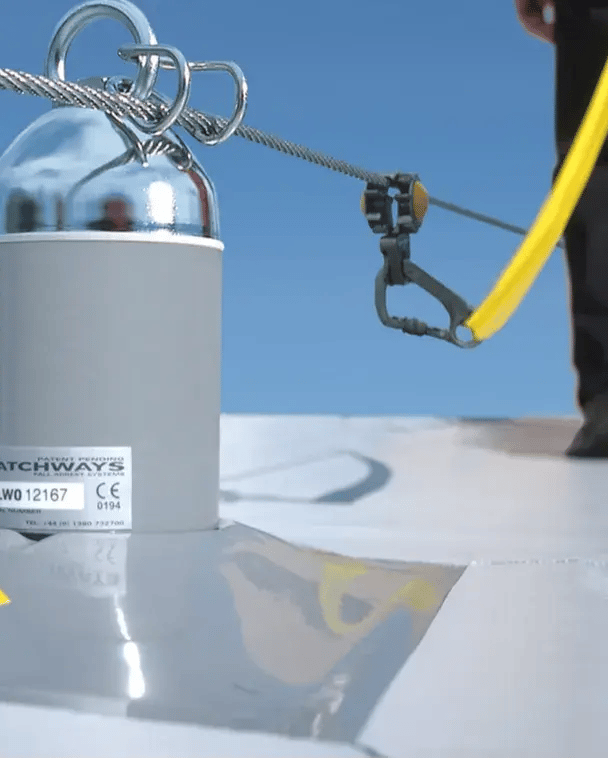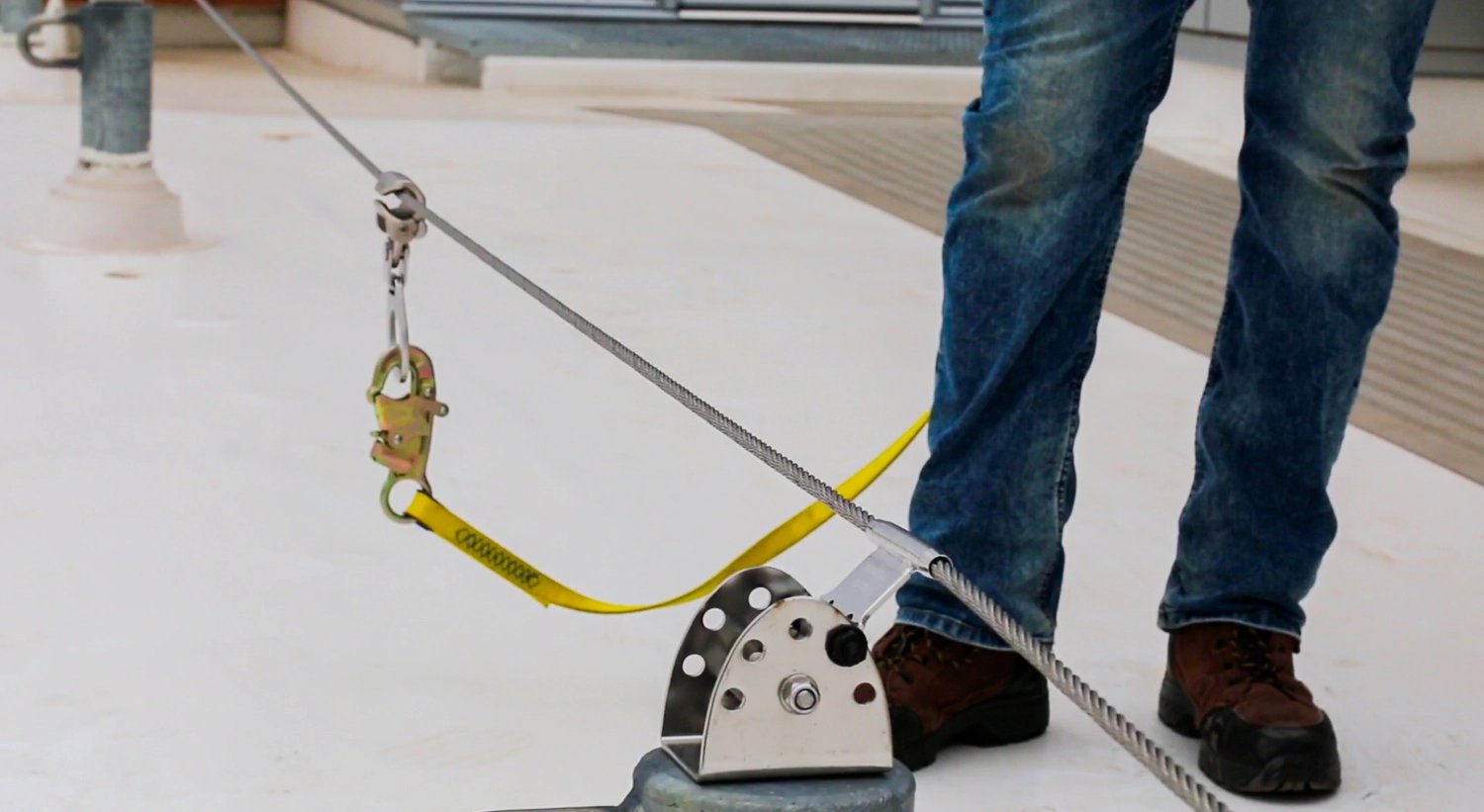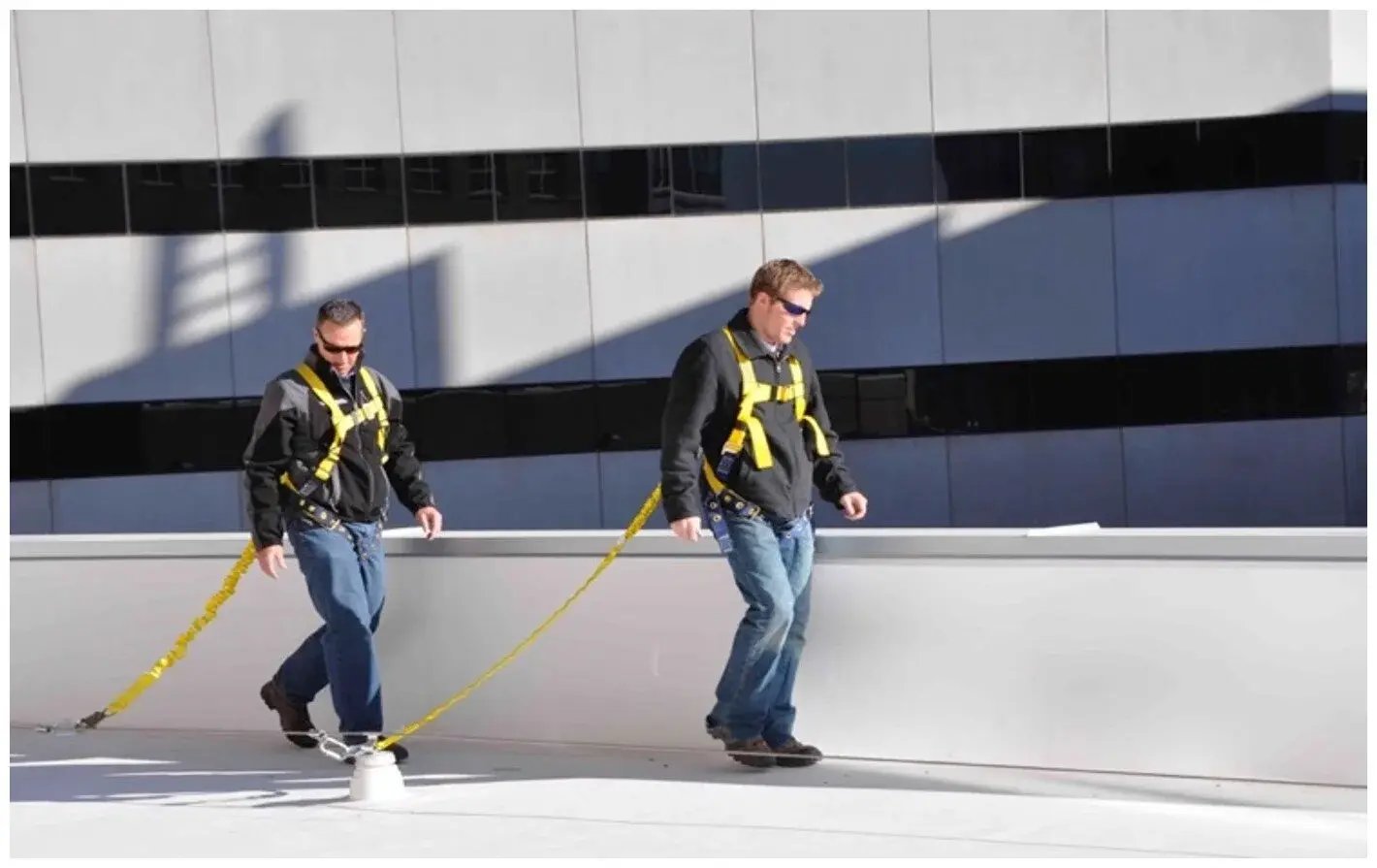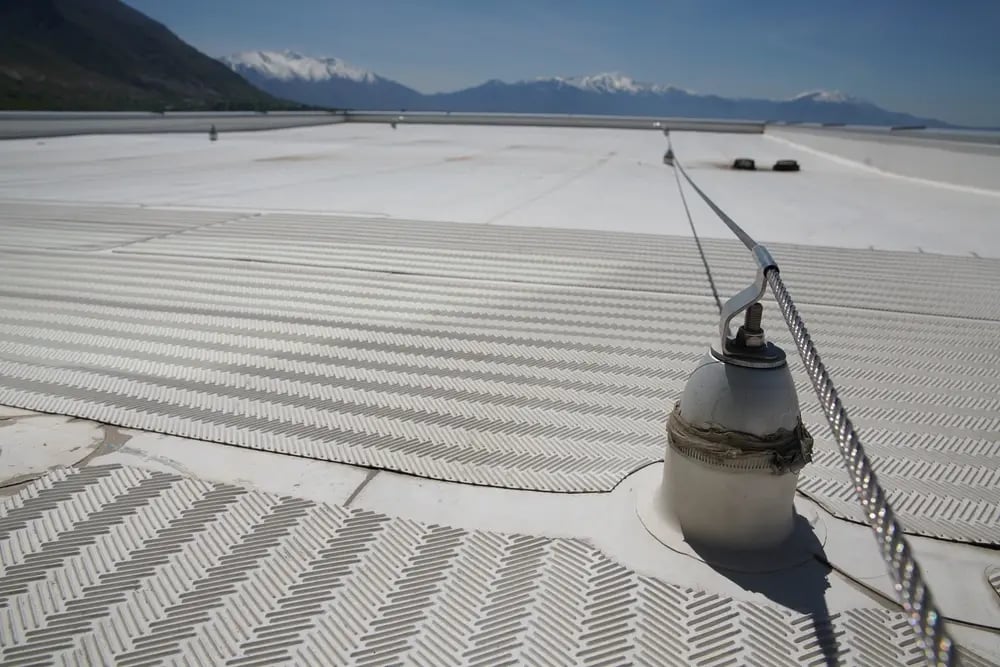Horizontal Lifelines For Roof Applications
Roof Horizontal Lifelines are cabled-based systems utilized for fall arrest and fall restraint purposes. Our team of safety specialists can partner with you to design, fabricate, and install a permanent rooftop horizontal lifeline system for flat and sloped roofs constructed from the entire range of commercially available materials including metal, rubber membrane, concrete, and built up roofs. Diversified Fall Protection engineers and installs roof horizontal lifelines that feature both rigid and minimally invasive tip over post technology. Making sense out of which options to choose can seem like a daunting task. This is why our engineering department performs an on-site visit for each project to ensure a fall protection solution that best suits your application.
By connecting a steel cable to two or more anchor points, maintenance personnel and contractors can safely access, inspect, and repair rooftop equipment while maintaining 100% tie-off at all times. Although there are similarities between applications, each roof work environment poses specific fall protection challenges which are often best addressed with a custom-engineered solution. By partnering with a fall protection company familiar with the unique nature of rooftop fall hazards, cost effective solutions that ensure worker safety and OSHA compliance are achievable without compromising worker productivity.

Design Considerations
Despite the simplicity of their appearance, rooftop horizontal lifeline systems are incredibly complex fall protection systems and great care must be taken to ensure worker safety and OSHA compliance. When partnering with a fall protection company to specify a rooftop horizontal lifeline, keep the following information top of mind:
ANCHORAGE STRUCTURE TYPE AND STRENGTH The structure your system attaches to (I-beams and structural steel beneath the roof deck) roofing material (corrugated steel, standing seam metal, rubber membrane substrates, and concrete), and pitch dictate the type of anchor posts utilized for the application. Tip-over posts require minimal rooftop penetrations during installation, but if the roofing material is a thinner gauge metal, or if the pitch is too steep, a rigid post system is required. It is vital to select a system that has been precision engineered and rigorously tested for the application and structure it will be attached to. Special care must be taken to account for the loads on various anchor points and deflection in the event of a fall, thus requiring certified and experienced engineering and installation capabilities. Each anchor point must be secure enough to withstand the forces associated a fall and a thorough review of the work area is needed to ensure that a worker will not strike pipes, equipment, or other surfaces when falling. Load and deflection rates are determined by a number of factors, including pre-tension of the cable, length of the area spanned by the horizontal lifeline, and the number of workers connected to the system.
ANCHOR POINT LOCATION Your required access points, traffic patterns, and application dictate anchorage point locations for your horizontal lifeline system. Whether the system is overhead, at your feet or somewhere in between, system components, design and structural strength must be considered when designing the system.
SYSTEM TYPE - STRAIGHT OR CURVED, AND LENGTH The length of system and whether it needs to be designed to protect a worker going around a corner or if its just a straight system will effect system design criteria, strength requirements and performance upgrades. Diversified Fall Protection can utilize specialized components to customize the rooftop lifeline to achieve straight line, L-shaped, and curved configurations to meet your specific access needs.
NUMBER OF USERS When developing a specification for a rooftop lifeline system, it is important to consider the number of users to ensure worker safety. Diversified Fall Protection can develop a rooftop lifeline to support the safety requirements of one, two, and even up to six workers depending on your specific needs.
See Our Roof Horizontal Lifelines





b-1.jpg?width=1368&height=1340&name=Rail%20(175)b-1.jpg)

